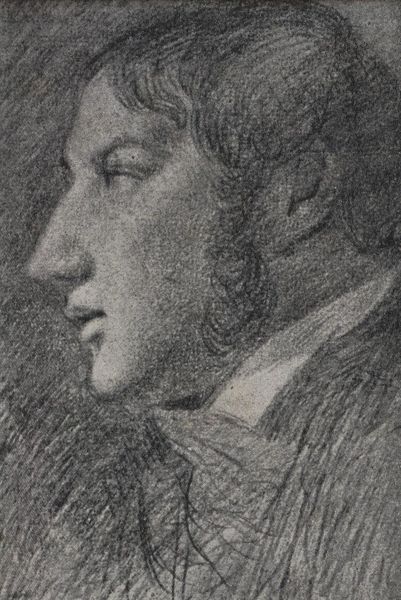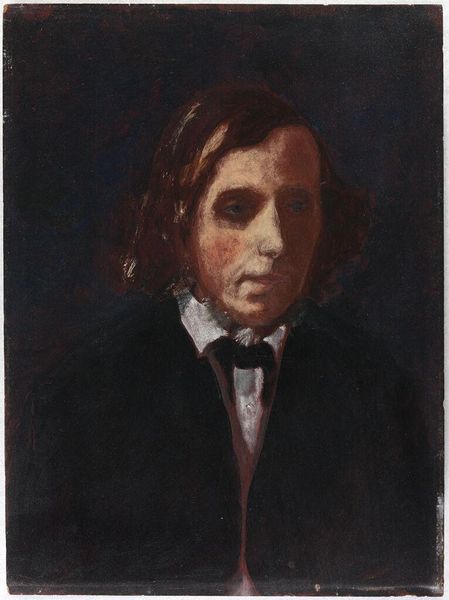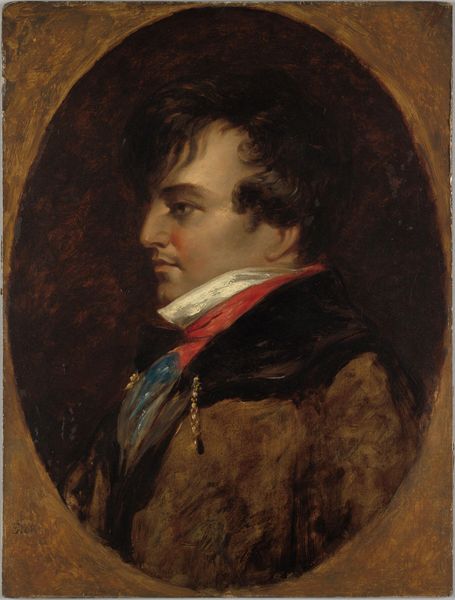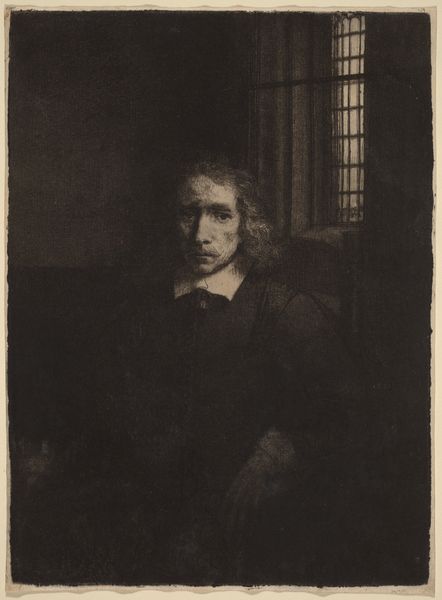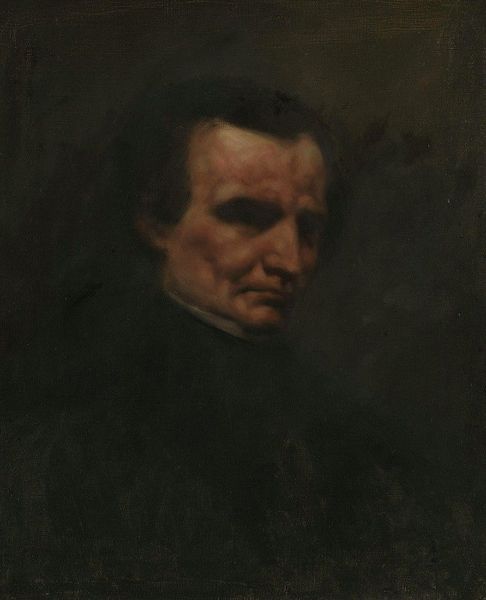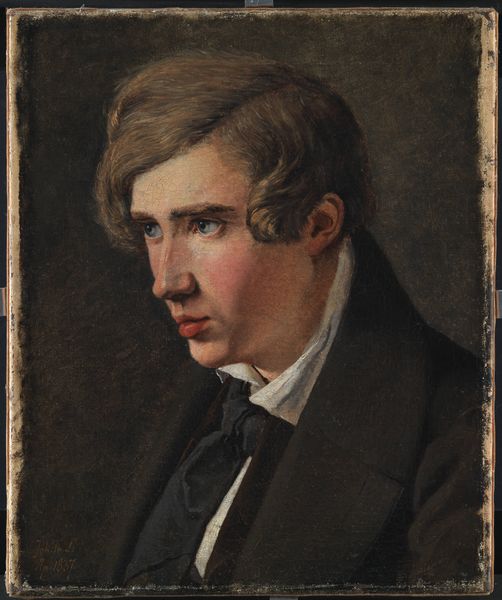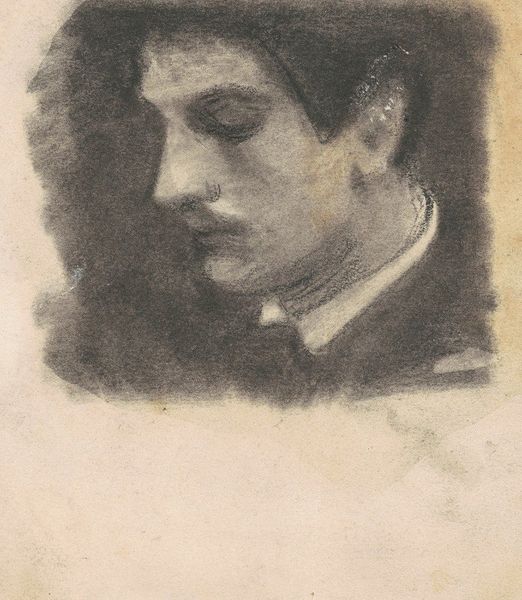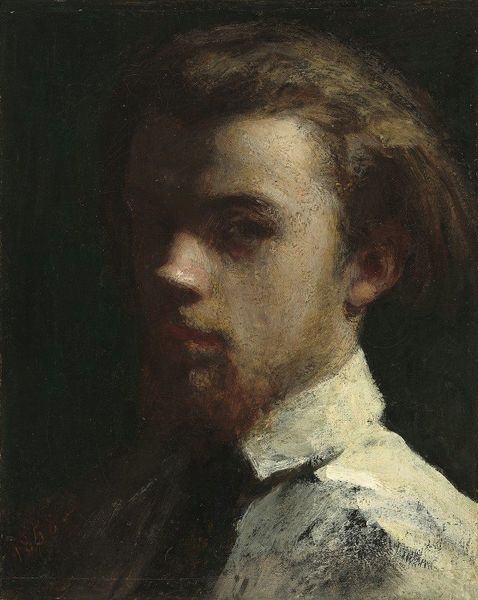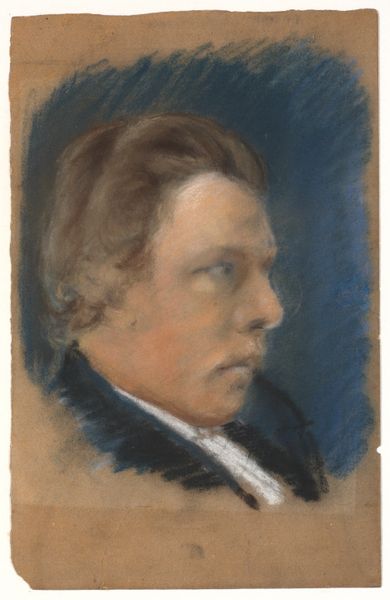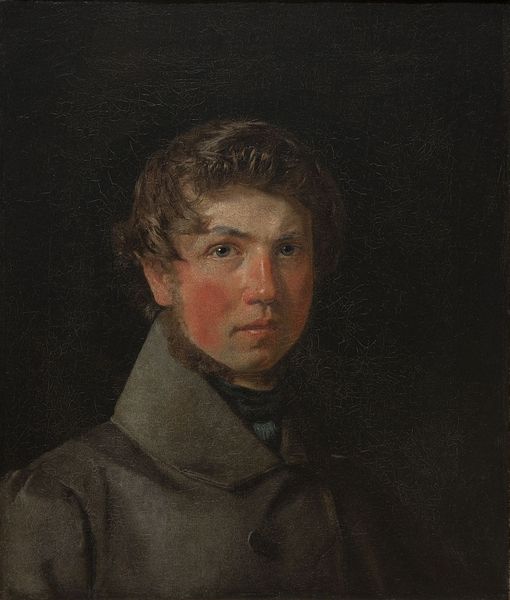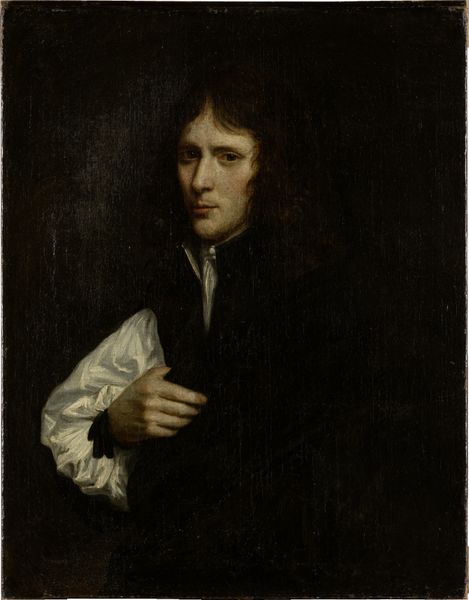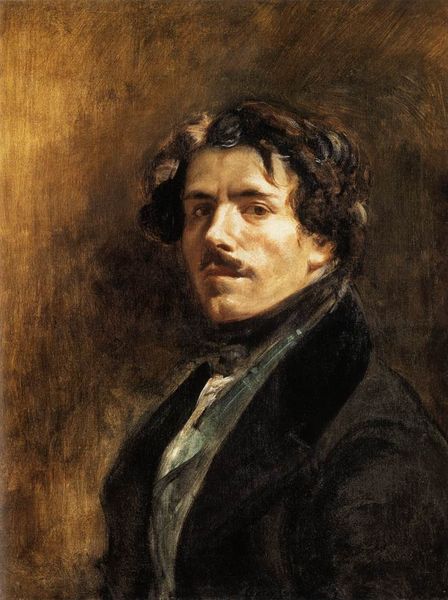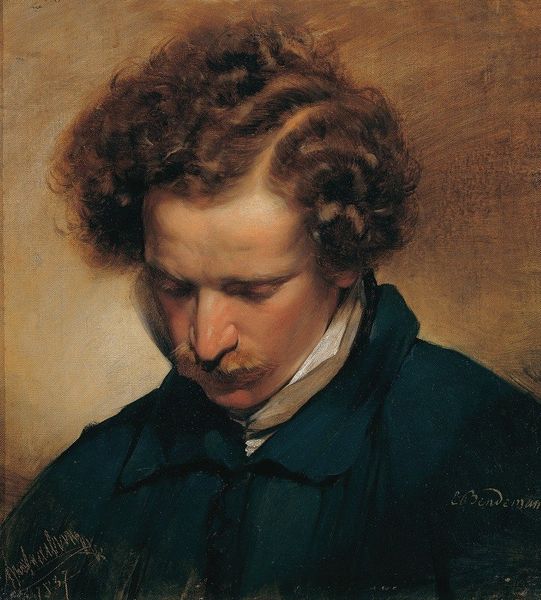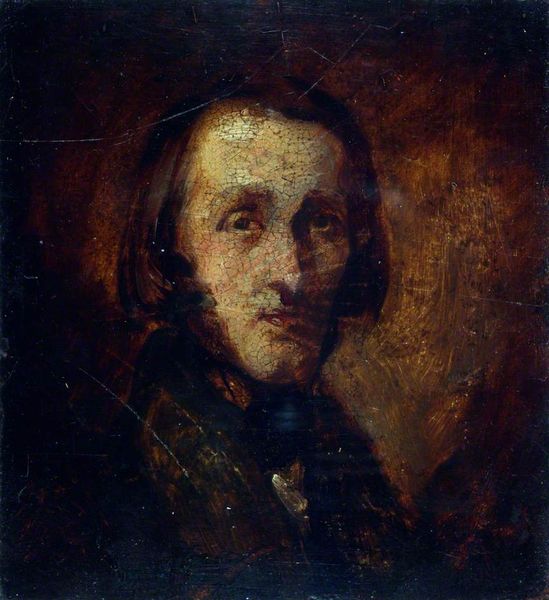
Dimensions: support: 406 x 330 mm frame: 698 x 615 x 118 mm
Copyright: CC-BY-NC-ND 4.0 DEED, Photo: Tate
Editor: Here we have John Opie's "Portrait of the Artist". It's undated, but Opie lived from 1761 to 1807. The oil on canvas has such a somber mood; what strikes you most about this piece? Curator: Considering the socio-political context, self-portraits like these often served as declarations of artistic independence. How might Opie be using this image to shape his public persona and artistic legacy? Editor: Perhaps by downplaying his wealth he is trying to be seen as more relatable to the masses? Curator: Exactly. And the dim lighting? It directs our focus and possibly hides any signs of extravagance, reinforcing his image as a serious, dedicated artist. It's about crafting a narrative. What do you think? Editor: That makes me look at it in a completely different light. Curator: Art is never created in a vacuum. It is always a part of the ongoing conversation.
Comments
tate 6 months ago
⋮
http://www.tate.org.uk/art/artworks/opie-portrait-of-the-artist-n01826
Join the conversation
Join millions of artists and users on Artera today and experience the ultimate creative platform.
tate 6 months ago
⋮
In this self-portrait Opie uses the contrasts of light and dark for which he was particularly renowned to very dramatic effect. Opie was largely self-trained. Originally from Cornwall, he moved to London at the beginning of the 1780s, where his career was managed by an art critic named John Wolcot. Opie’s robust, striking painting style seemed fresh and new, and was taken as reflecting his origins among the rural working class. The forthright drama of this painting exemplifies his reputation as ‘the Cornish wonder’. Gallery label, September 2004
